DERBY CATHEDRAL HERITAGE WALK

THE CATHEDRAL
Visible from a considerable distance, Derby Cathedral dominates the skyline with its impressive perpendicular tower. It was built early in the 16th century, but worship has taken place since the 10th century. It became Derby Cathedral, in 1927. The Cathedral’s impressive entrance gates, made by Robert Bakewell, were moved from St Mary’s Gate in 1957. The gates were refurbished in 2012 and renamed Queen Elizabeth II Gates to celebrate the Queen’s Diamond Jubilee.
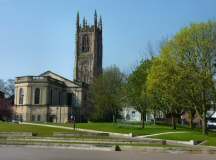
The Interior
Inside the Cathedral is exceptionally beautiful. Light and spacious with the iron screen by Robert Bakewell an inspirational masterpiece in this proud and beautiful building. There are many other exciting features and monuments, including Bess of Hardwick’s Monument, Joseph Wright’s Tombstone and much more. In 1978, the outer part of the Cavendish burial vault was converted into a small Crypt Chapel.
The Tower
The tower at 212 feet is said to be the second-highest in England, next to Boston Stump, and it has the oldest ring of ten bells in the world. Ancient records indicate that there were five bells at All Saints’ as long ago as 1509 and an additional five were added later. The bells were re-tuned and re-hung by John Taylor and Co. in 1927, when they were set down six feet or so lower in the tower, to minimize the danger of damage through vibration. In 1745, the Young Pretender, Bonnie Prince Charlie, is known to have ordered the bells of All Saints to be rung and to have attended a service held in the church with his officers.
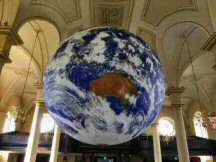
Events
In 2019, the Museum of the Moon at Derby Cathedral attracted thousands of visitors. This was followed shortly afterwards by the display of the spectacular, 27 feet high Knife Angel sculpture. The statue was made from around 100,000 bladed weapons, collected during police amnesties across the country. September 2022 saw the arrival of the Gaia a touring artwork measuring seven metres in diameter and created from 120dpi detailed by NASA imagery of the Earth’s surface. A specially made surround sound composition by BAFTA award-winning composer Dan Jones was played alongside the sculpture. More leading events are planned – click here for details.
THE WALK
Although this is only a short walk it is packed with interest. If you visit Derby Cathedral and the Museum of Making at Derby Silk Mill you will need to allow yourself plenty of time to complete your journey. It is also well worth trying to go on a day when St Mary’s Bridge Chapel is open to the public, it is an amazing place. All the suggested visits are highly recommended.
LOOK OUT FOR
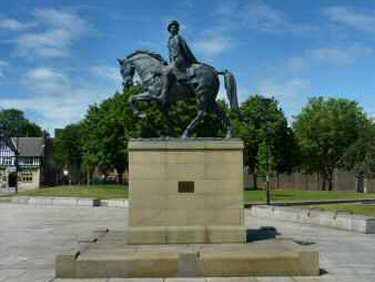
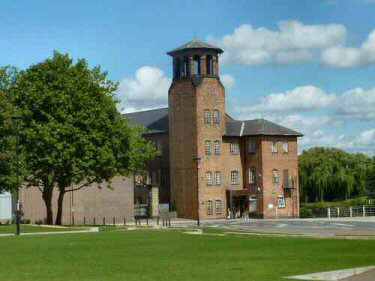
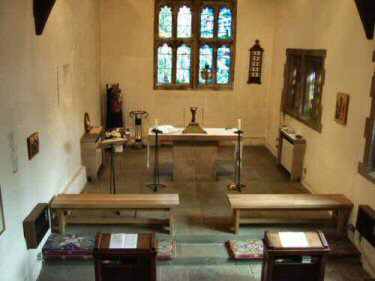
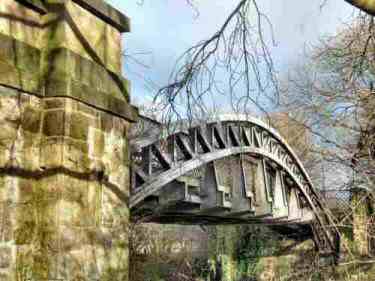
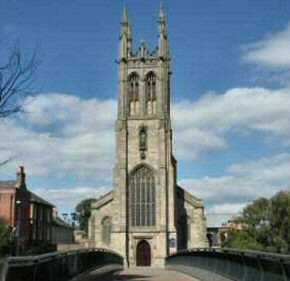
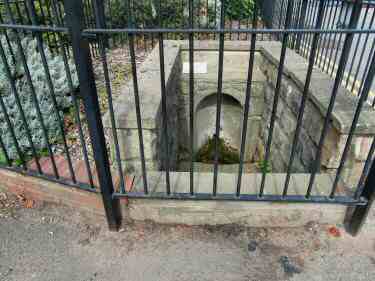
THE ROUTE
Face the front of the Cathedral and go to your right for a few yards before turning to the left down cobbled Amen Alley. Cross the road to the Bonnie Prince Charlie statue. He arrived with his Jacobite army in Derby on 4 December 1745. The proposal was to march to London and seize the throne. But lacking the promised support from the French and others the decision was made at Derby to withdraw and return to Scotland.

2. Walk down Cathedral Green to the Museum of Making at Derby Silk Mill, which sits on the site of the world’s first factory, now part of the Derwent Valley World Heritage Site.
3. Go to the left between the museum and the River Derwent and follow the path under the inner ring road and St Mary’s Bridge (when flooded use Sowter Road). Watch out for a sighting of St Mary’s Bridge Chapel.
4. On reaching the far side of St Mary’s Bridge, continue along the riverside path. Just before reaching Handysides Bridge ascend a short flight of steps. The bridge is where the Great Northern Railway trains used to cross the river. Turn left and walk up the slope to North Parade and turn left again.
5. The houses in North Parade have been built in two lots of eight on a descending site, which provides an extra storey at the rear. You may wish to take a diversion down Well Street to view St Alkmund’s Well before returning to North Parade. Derby’s last remaining Holy Well. It was first mentioned in 1190 but may date back much further to shortly after 800. Care the street is steep. At the end of North Parade keep straight on down Darley Grove.
6. Turn right at the bottom of the street in front of St Mary’s Roman Catholic Church. It was the first major church designed by Augustus W.N. Pugin, whose rise to prominence largely came about through the publication of five books on ecclesiastical architecture he had written. He expertly put theory into practice and the church became known as ‘Pugin’s Masterpiece.’
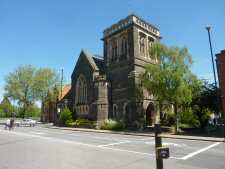
7. Cross the footbridge over the inner ring road and then King Street. Continue straight ahead along Queen Street past the former St Michael’s Church. Head towards the Cathedral which you can see in the distance. Go past the Dolphin, Derby’s oldest surviving pub. It is claimed to have been founded in 1530. The Dolphin was a well-known Christian symbol in medieval days. This gives credibility to the presumed date of the founding of the pub. A few yards further on you arrive at the Cathedral and the end of the walk.
REFRESHMENTS
The Museum of Making at Derby Silk Mill is to the rear of Derby Cathedral by the River Derwent. For more information visit: www.derbymuseums.org/museum-of-making/visit or telephone 01332 641901.
The Dolphin Inn is on the corner of Queen Street and Full Street. For more information visit: www.yeoldedolphin.co.uk or telephone 01332 267711
